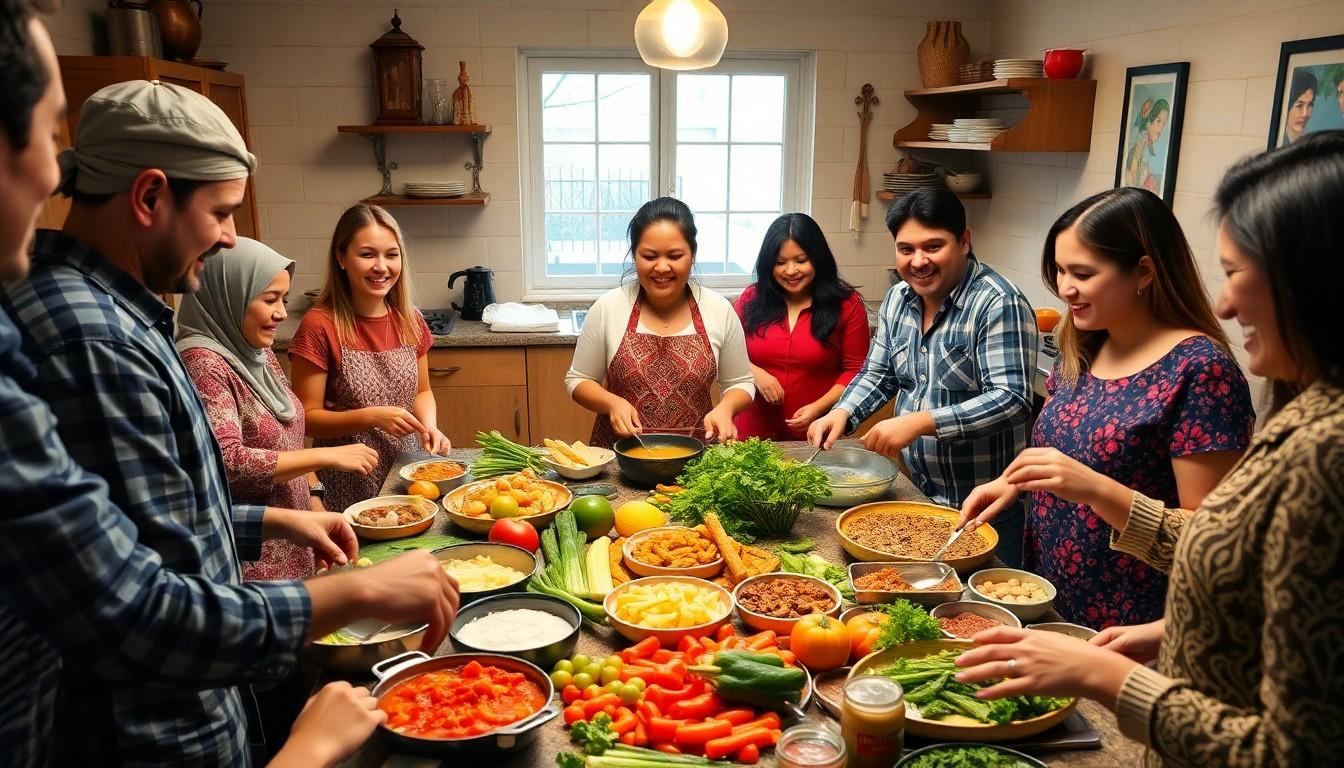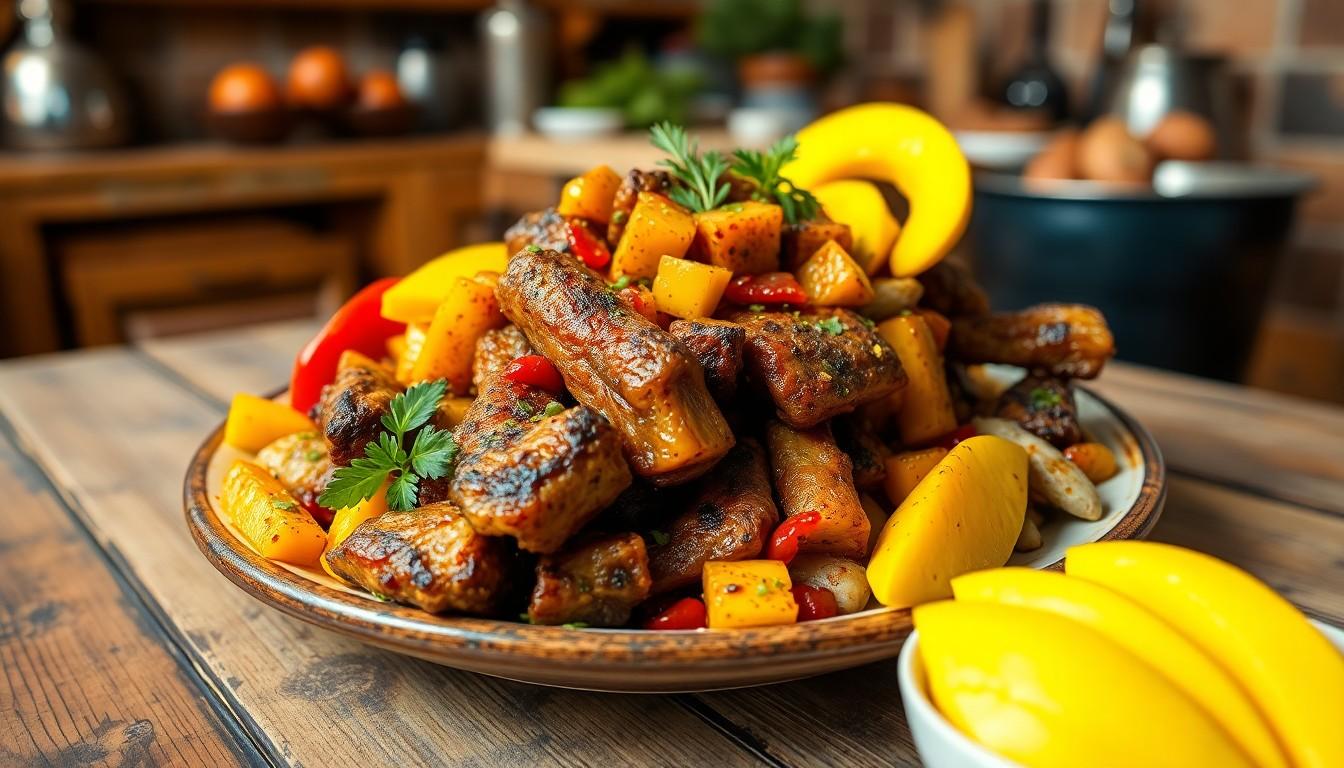In the vibrant tapestry of culinary delights, few dishes can boast the quirky charm of chagurbaye. This unique creation isn’t just food; it’s an experience that tantalizes the taste buds and tickles the funny bone. Imagine a dish that combines unexpected flavors, leaving diners both puzzled and delighted. It’s the kind of meal that sparks conversations and maybe even a few laughs around the table.
Overview of Chagurbaye
Chagurbaye represents a unique dish that captivates diners with its unusual ingredients and delightful flavors. This culinary marvel combines contrasting tastes, creating an experience that incites conversation and joy.
What Is Chagurbaye?
Chagurbaye consists of an array of ingredients often unexpected in traditional dishes. Elements include spicy vegetables, tender meats, and occasionally fruity accents, which all blend harmoniously. Diners often encounter textures that surprise and excite the palate. Chefs craft chagurbaye with creativity, aiming for a balance between familiar and avant-garde. This dish invites experimentation, ensuring varied interpretations across different cultures and regions.
Historical Significance
Chagurbaye’s origins trace back to regional cooking traditions, reflecting the cultural evolution of its ingredients. Historical accounts illustrate how it adapted through culinary exchanges among communities. Over time, this dish gained recognition, illustrating diverse cooking techniques and flavor pairings. Its popularity grew in festive gatherings, symbolizing unity and celebration among diners. Today, chagurbaye stands as a testament to culinary innovation, bridging past and present gastronomic trends.
Cultural Importance

Chagurbaye plays a significant role in cultural expression and culinary heritage. Its complexity and creativity reflect the rich tapestry of traditions in which it exists.
Chagurbaye in Tradition
Chagurbaye embodies cultural storytelling through its diverse ingredients. Many communities pass down recipes from generation to generation, preserving unique culinary heritages. Personal stories often accompany this dish, connecting families and friends through shared meals. Various regional interpretations emerge, showcasing local tastes and customs. Such adaptations allow chagurbaye to evolve while remaining rooted in tradition.
Festivals and Celebrations
Chagurbaye takes center stage during festive gatherings, enhancing social bonds among participants. Celebrations often include communal cooking sessions where families collaborate to prepare this dish. This collaboration fosters a sense of unity, strengthening cultural identity. Festive variations of chagurbaye emerge, featuring seasonal ingredients that symbolize abundance and joy. The presence of chagurbaye at celebrations signifies a shared commitment to culinary innovation, inviting creativity from all who partake.
Nutritional Value
Chagurbaye delivers a rich combination of nutrients through its diverse ingredients. This dish features a variety of components, each contributing unique nutritional value.
Key Ingredients
Chagurbaye often includes spicy vegetables like bell peppers and chilies, which add vitamins A and C. Tender meats enhance the protein content, providing essential amino acids. Fruity accents like mango or pomegranate introduce antioxidants and dietary fiber. Grains, such as quinoa or couscous, supply carbohydrates and additional nutrients. The blend of herbs and spices also enriches the dish, giving it both flavor and health benefits.
Health Benefits
Chagurbaye offers multiple health advantages thanks to its ingredients. Consuming this dish may improve digestion due to high fiber content found in fruits and vegetables. Antioxidants present in specific ingredients can support heart health and boost the immune system. Protein from meats aids in muscle building and repair, while the variety of vitamins helps maintain overall well-being. This dish contributes to a balanced diet, promoting vitality and energy levels.
Preparation and Cooking Methods
Chagurbaye preparation involves diverse methods and techniques that highlight its unique flavors.
Traditional Recipes
Traditional recipes for chagurbaye often combine local ingredients and cooking techniques. Chefs typically use a mix of aromatic spices, hearty meats, and vibrant vegetables. Cooking often takes place in communal pots, fostering a sense of togetherness. Recipes vary by region, emphasizing local tastes and customs. Each family may adapt their version over time, passing down cherished recipes. Spice combinations typically include cumin, coriander, and turmeric, enhancing the dish’s complex flavor profile. Fresh herbs like cilantro or parsley often garnish the final dish, adding a touch of color and freshness.
Modern Variations
Modern variations of chagurbaye embrace creativity and global influences. Chefs today may experiment with fusion ingredients, blending traditional elements with contemporary flavors. For instance, they can incorporate superfoods like kale or quinoa to boost nutritional value. Experimental cooking methods, such as sous-vide or grilling, introduce new textures and tastes. These variations reflect personal interpretations, allowing for customization based on dietary preferences. Seasonal ingredients often play a crucial role, inviting chefs to adjust flavors for freshness. Dishes may feature new garnishes or sauces that elevate the overall presentation and taste experience.
Conclusion
Chagurbaye stands as a testament to culinary creativity and cultural richness. Its blend of flavors and ingredients not only delights the palate but also tells a story of tradition and innovation. As families gather around this dish, they strengthen bonds and celebrate their heritage, making each meal a memorable experience.
With its nutritional benefits and versatility, chagurbaye continues to evolve while honoring its roots. Whether enjoyed in a traditional setting or through modern adaptations, it invites everyone to partake in a unique culinary journey. This dish is more than just food; it’s a celebration of life, community, and the joy of sharing.

